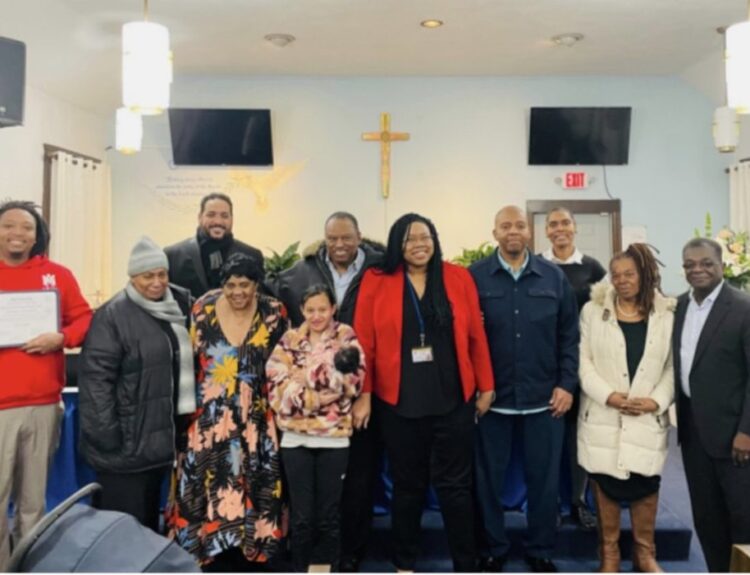Advocates say new, targeted SNAP cuts will continue to strain the region’s anti-hunger resources. Food programs are looking for donations and volunteers as the holidays near.
This story was originally published in The New Bedford Light, a publication partner of Ocean State Stories.
NEW BEDFORD — Earlier this month, nearly half of New Bedford households were left in the lurch after the federal shutdown paused food benefits. Food access advocates in the region say the ensuing chaos was only a taste of what’s to come.
On Nov. 1, 42 million households across the U.S., including 1.1 million in Massachusetts, lost access to the Supplemental Nutritional Assistance Program, or SNAP. On Nov. 10, Massachusetts Gov. Maura Healey declared that SNAP funding had been restored. The pause and legal back and forth left families unsure whether they could afford groceries. It tested local food banks and pantries, which saw a surge in visitors.
Now, a week before Thanksgiving, local food pantries and food organizations are running food drives, looking for food donations, dollars, and volunteers.
Soon, millions more SNAP recipients will lose access to their benefits under new regulations in President Donald Trump’s One Big Beautiful Bill Act. The regulations cut off SNAP access for refugees and other non-citizens with legal U.S. residence, and they implemented new work requirements for SNAP recipients between ages 55 and 64.
These changes are especially impactful in New Bedford, where roughly 1 in 5 residents were born outside the U.S. and nearly 1 in 4 live below the poverty line. The new requirements went into effect on Nov. 1, but they will affect individual SNAP recipients on a rolling basis over the next 12 months, as households renew their annual SNAP eligibility.
“This was a window into what’s coming down the pike,” said Liz Wiley, the executive director of the Marion Institute, a regional nonprofit dedicated to sustainable food access. “What we just saw is what’s going to become more and more apparent over the next 12 months.”
Helping out now
Although some of the region’s food pantries have reported a slight decline in demand after the surge early this month, the holiday season is still one of the busiest times for food providers.
▸ Click here for a list of New Bedford’s food pantries and providers
Right now, the PACE Community Food Center is looking for more breakfast items, including cereal, waffle and pancake mix, syrup, sliced bread, and jam. One of the largest food pantries in the region, it’s open every weekday, and its donation needs change weekly.
The City of New Bedford’s Community Services Department is running a food drive through March 31 to benefit local food pantries and the city’s Housing Authority. Program Director for Community Outreach and Engagement Marcelina Pina-Christian said the drive is mostly looking for nonperishable items and canned goods.
Wiley encouraged residents looking to help to call their local food pantries to see what donations would be most helpful. When in doubt, she said, the best donation comes in dollars, not cans.
“The dollar goes further than that can of soup,” Wiley said. “That way, food pantries can really identify what their needs are and then purchase what those needs are. So even though it doesn’t seem the same, funding — money — is important.”
Most organizations also need more volunteers around the holidays and year-round, Wiley said. The Marion Institute runs a year-round gleaning program: volunteers come to participating farms to pick excess crops for donation to food pantries. Programs like these — as well as intermediaries like Coastal Foodshed that connect SNAP recipients with locally sourced produce and agricultural goods — help people get a complete set of groceries, Wiley said.
“The hardest food items for food-insecure individuals to get access to is fruits, vegetables, meat, and dairy,” Wiley said.
Getting involved in the future
On Monday, a dozen local farmers, advocates, and representatives from the Healey administration’s Anti-Hunger Task Force met at the Bristol County Agricultural High School in Dighton to discuss how best to support food-insecure residents on the South Coast.
The listening session focused on creating better pathways between local farmers and food pantries in need of meats, fruits, and vegetables.
In 2017, Massachusetts launched the Healthy Incentives Program to do just that: grant SNAP recipients additional funds to buy fresh meat, dairy, and produce from local farmers. Eight years later, HIP has grown into a $25 million program, although it was very nearly cut to $15 million this past legislative session. And yet, HIP only serves about 171,000 Massachusetts households, a small fraction of the state’s 1.1 million SNAP recipients.
Laura Smith, a farmer in Dighton, said roughly 75% of her customer base were HIP recipients. Listening session facilitator and New England Public Media host Monte Belmonte said the HIP program has become “almost a victim of its own success.”
“If we have more HIP vendors, how quickly will the money run out?” Monte said.
Wiley said the South Coast and the state need more sustainable ways to connect residents with local food. In New Bedford, the country’s highest-grossing fishing port, and much of the city’s catch is shipped across the country instead of feeding those nearby, she said.
This is one of the questions Wiley hopes to explore as part of the Marion Institute’s South Coast Food Policy Council, a coalition of food pantries, farms, foundations, and social service agencies. The council is creating a 2026 food system assessment of Bristol, Norfolk, and Plymouth counties, slated to come out next fall.
Anyone can join the Council, Wiley stressed. She also hopes that other regions follow suit with their own networks.
Email Brooke Kushwaha at bkushwaha@newbedfordlight.org






